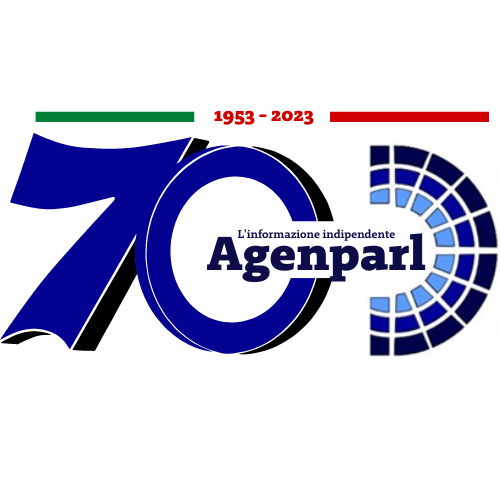 (AGENPARL) - Roma, 14 Settembre 2023
(AGENPARL) - Roma, 14 Settembre 2023(AGENPARL) – gio 14 settembre 2023 September 14, 2023
RELEASE 23-106
*NASA Shares Unidentified Anomalous Phenomena Independent Study Report*
nasa_meatball_1.jpeg
*/Credits: NASA/*
In response to a recommendation by an independent study team for NASA to play
a more prominent role in understanding Unidentified Anomalous Phenomena
(UAP), the agency announced Thursday it is appointing a director of UAP
research.
The study team’s full report, which includes a foreword from NASA noting
the new role, is available on the agency’s website:
https://go.nasa.gov/3PED0qv [1]
NASA commissioned the independent study to better understand how the agency
can contribute to ongoing government efforts to further the study
observations of events in the sky that cannot be identified as balloons,
aircraft, or as known natural phenomena from a scientific perspective.
“At NASA, it’s in our DNA to explore – and to ask why things are the way
they are. I want to thank the Independent Study Team for providing insight on
how NASA can better study and analyze UAP in the future,” said
Administrator Bill Nelson. “NASA’s new Director of UAP Research will
develop and oversee the implementation of NASA’s scientific vision for UAP
research, including using NASA’s expertise to work with other agencies to
analyze UAP and applying artificial intelligence and machine learning to
search the skies for anomalies. NASA will do this work transparently for the
benefit of humanity.”
The report contains the external study team’s findings and recommendations
which aim to inform NASA on what possible data is available to be collected
and how the agency can help shed light on the origin and nature of future
UAP. The report is not a review or assessment of previous UAP incidents.
While NASA is still evaluating the report and assessing the independent study
team’s findings and recommendations, the agency is committed to
contributing to the federal government’s unified UAP effort by appointing a
director of UAP research.
A NASA liaison to the Department of Defense previously covered limited UAP
activities for the agency, and the director role will centralize
communications, resources, and data analytical capabilities to establish a
robust database for the evaluation of future UAP. The director also will
leverage NASA’s expertise in artificial intelligence, machine learning, and
space-based observation tools to support and enhance the broader government
initiative on UAP.
The independent study team’s overall recommendation for NASA from its
report is that the agency can play a prominent role in the government’s
effort to understand UAP by furthering the study and data collection of UAP.
The external study recommends that NASA use its open-source resources,
extensive technological expertise, data analysis techniques, federal and
commercial partnerships, and Earth-observing assets to curate a better and
robust dataset for understanding future UAP.
NASA also will advance citizen reporting by engaging with the public and
commercial pilots to build a broader, more reliable UAP dataset to use to
identify future UAP incidents as well as destigmatize the study of UAP.
“Data is the critical lifeblood needed to advance scientific exploration,
and we thank the independent study team members for lending NASA their
expertise towards identifying what available data is possible to understand
the nature and origin of future UAP,” said Nicola Fox, associate
administrator, Science Mission Directorate at NASA Headquarters in
Washington. “The director of UAP Research is a pivotal addition to NASA’s
team and will provide leadership, guidance and operational coordination for
the agency and the federal government to use as a pipeline to help identify
the seemingly unidentifiable.”
The independent study team, set up outside of NASA, used unclassified data
from civilian government entities, commercial data, and data from other
sources to inform their findings and recommendations in the report. There are
currently a limited number of high-quality observations of UAP, which
currently make it impossible to draw firm scientific conclusions about their
nature.
“Using unclassified data was essential for our team’s fact-finding,
open-communication collaboration, and for upholding scientific rigor to
produce this report for NASA,” said David Spergel, president of the Simons
Foundation and chair of the UAP independent study team. “The team wrote the
report in conjunction with NASA’s pillars of transparency, openness and
scientific integrity to help the agency shed light on the nature of future
UAP incidents. We found that NASA can help the whole-of-government UAP effort
through systematic data calibration, multiple measurements and ensuring
thorough sensor metadata to create a data set that is both reliable and
extensive for future UAP study.”
The UAP independent study team [2] is a counsel of 16 community experts
across diverse areas on matters relevant to potential methods of study for
unidentified anomalous phenomena. NASA commissioned the study to examine UAP
from a scientific perspective and create a roadmap for how to use data and
the tools of science to move our understanding of UAP forward.
For more information about NASA’s UAP work:
*https://science.nasa.gov/uap/* [3]
-end-
*Press Contacts*
Katherine Rohloff
Headquarters, Washington
202-358-1600
NASA news releases and other information are available automatically by
text in the body is required).
To unsubscribe from the list, send an e-mail message
required).
[1] https://go.nasa.gov/3PED0qv
[2] https://www.nasa.gov/feature/nasa-announces-unidentified-anomalous-phenomena-study-team-members/
[3] https://science.nasa.gov/uap/
